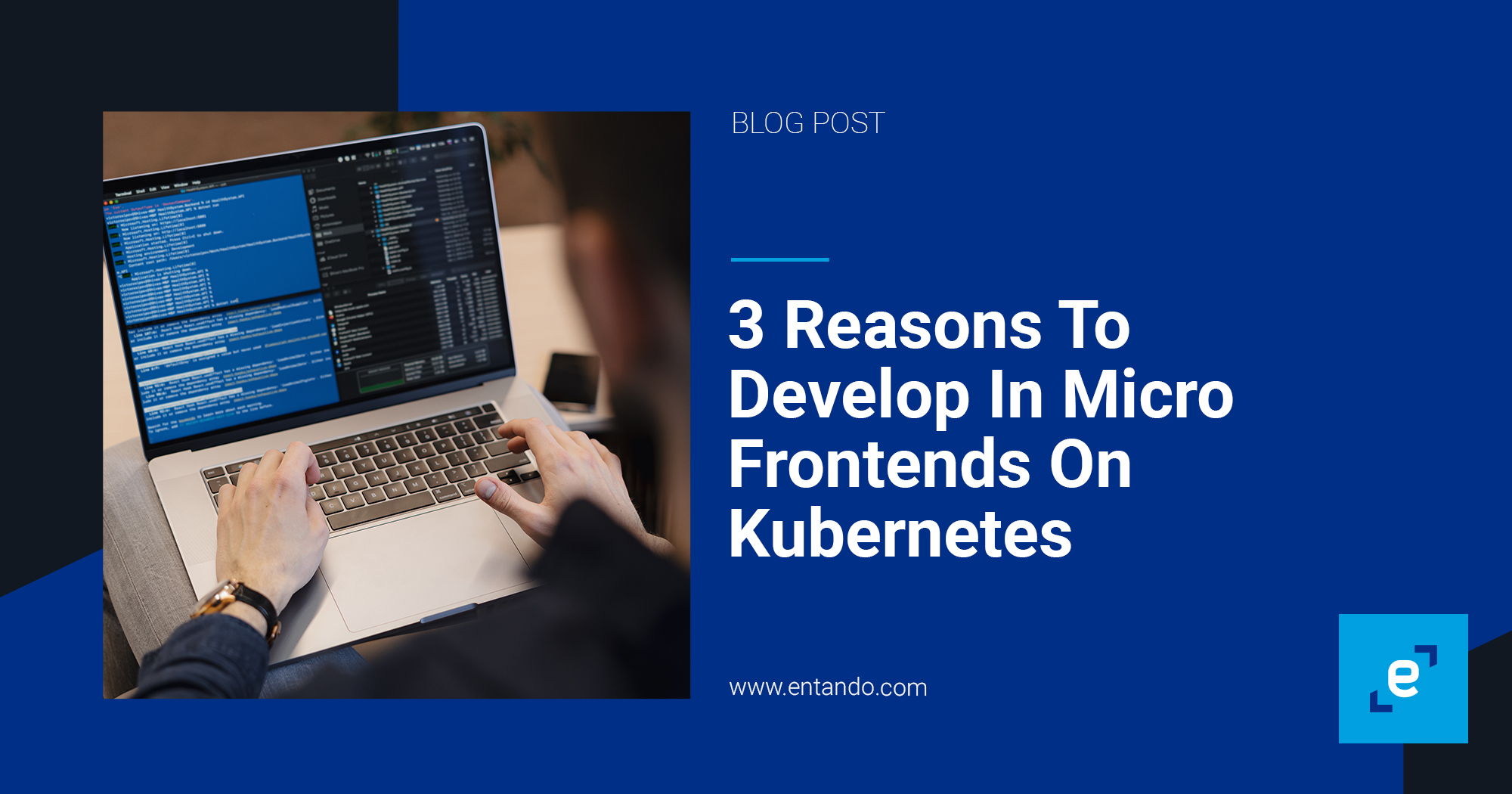
3 Reasons To Develop In Micro Frontends On Kubernetes
When you’re building enterprise scale applications, it’s important to empower your teams with tools and methods that will help them be more successful more quickly. Here are 3 ways developing in micro frontends on Kubernetes does just that.
As your organization grows, and your need for innovative and intuitive online experiences with it, your app development process can become very complicated very quickly. If you’re developing apps in monolithic architectures, you may not be nimble enough to make necessary UX improvements in a timely manner.
Many IT leaders have addressed the need to isolate teams and move more quickly by employing a microservice architecture. However, for many enterprises, the frontend monolith remains intact, and it creates considerable bottlenecks in updating UX. This is the problem that micro frontends have been introduced to solve.
By decoupling frontend functionalities, you are able to create isolated team structures around business functions from the backend all the way up to the user experience. And in so doing, you enable your teams to get their ideas to market much more quickly.
When you develop with micro frontends in a Kubernetes environment, you give yourself the ability to build and deploy enterprise scale applications much more efficiently and effectively.
Here are 3 compelling reasons to develop your enterprise apps with micro frontends deployed on Kubernetes.
1. End-to-End Control for your Dev Teams
As organizations grow in size and complexity, decisions can be slowed by the need for coordination across teams. And while a cohesive overall vision is always necessary for any business to be successful, the larger an organization is, the more difficult it becomes for every one of your teams to keep pace with one another. When a given team is left waiting on another to make progress on their individual goals, or when they need to wade through organizational red tape to get their updates pushed to release, it can be both incredibly frustrating and highly demotivating.
So perhaps the chief benefit of using micro frontends on Kubernetes is your ability to give your teams true end-to-end control over their given function within the application. This kind of independence empowers and motivates teams to set their own sprints and innovate in their business function without fear of negatively impacting the rest of the app or site.
Developing in micro frontends on top of microservices and deploying in containers on Kubernetes allows you to decouple functionality from the backend all the way up to the UI layer, allowing you to democratize the decision making and implementation process. With this development process, you can empower the people best suited to make a decision and create a roadmap for its implementation--those who are immediately responsible for it and who already know the situation best.
2. Technology Agnosticity
Another key benefit related to your teams’ end-to-end control is that you don’t need to have your entire organization use a standardized set of tools, which is particularly advantageous for organizations looking to acquire top talent across different teams, since they don’t need to be standardized to a particular skill set or tooling preference. Each team can make these technology decisions as an individual part of the greater whole, based on their teams goals, challenges, and given skill sets.
This technology agnosticity also gives you the ability to maintain a lower level of technical debt within a larger application over time. If new features or functions need to be introduced into the app, organizations can spin up a team that will build that functionality as a micro frontend that doesn’t need to be tightly coupled with the base app, allowing for greater flexibility in how they choose to build it.
3. Code Reuse and Standardization
While independence across teams allows you to move with much greater agility, maintaining a cohesive UX design vision can be a challenge. Without a robust design language system, your applications can tend toward inconsistency in look and feel, as well as user functionality.
In light of this challenge, micro frontends might seem like a counterintuitive solution. However, even with independent updates and autonomous teams, you can maintain agility while also increasing standardization. And that’s because micro frontends are reusable across applications and projects. This will cut down on development time in successive projects, as well as increase user consistency.
Build better apps faster with the leading micro frontend platform for Kubernetes.
When release cycles take months instead of weeks, your business is left unable to deliver modern online experiences. Development bottlenecks slow your ability to make application updates, keeping you from iterating and innovating. And outdated or clunky UX keeps you from winning customers over and retaining them.
So that’s why we created a platform to help you get your ideas to market faster.
Entando is the leading micro frontend platform for building enterprise web apps on Kubernetes. We want to change the way enterprises think about building their apps, sites, and portals in order to innovate more quickly.
With Entando, you can leverage customized blueprints to quickly create micro frontends and assemble them onto a single page. Then reuse UI/UX components across multiple projects via the Entando Component Repository, saving money and increasing development speed. Scale quickly and effectively with Entando’s custom Kubernetes operator, automating the deployment of scalable, self-healing applications.
Entando is open source with available enterprise support and services. Begin developing on the platform today, and get a quote to see how our team can help your enterprise build better apps, sites, and portals--faster.

